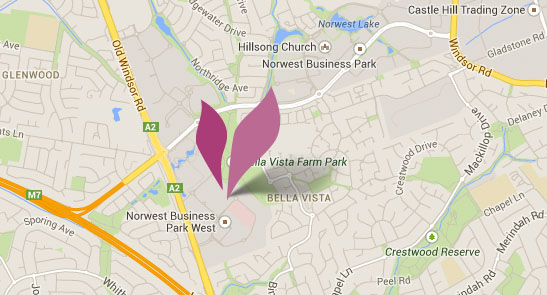Dr Gavin Sandercoe
Brachioplasty Scars
Excess skin on your arms as a result of age or weight loss has an impact on your choice of clothing, and therefore comfort especially in warmer months.
At the point in time that this page was written (2019), there is still no way to exercise your skin stronger, or reliably cause skin contraction with a non-surgical device. Unless you are prepared to build arms like Arnie, the only way to solve the problem is to remove the excess skin surgically. The trade off for removal of excess arm skin is a scar.
There are two common positions to place the scar from a brachioplasty. The first is along the line of maximum hang, which is Dr Gavin Sandercoe’s preferred position. The second is the inter-brachial groove – the line between your biceps and triceps on the inner aspect of your arm. There are a few other described scar positions, but these are rarely used by reputable Specialist Plastic Surgeons who do significant volumes of weight loss procedures.
Your arms are mobile structures, so scars that are hidden when your arms are by your side are often visible at other arm positions. Even turning your forearms from thumbs at your side to thumbs pointing away from you will bring some scars from a hidden position to being on view.
This series of photos shows how the two scars are visible from various positions depending on the position of the shoulder – elbow – wrist.

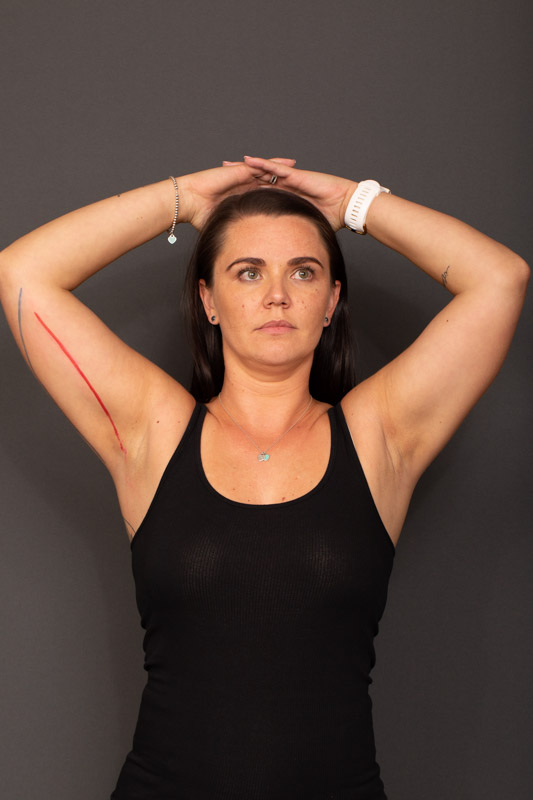
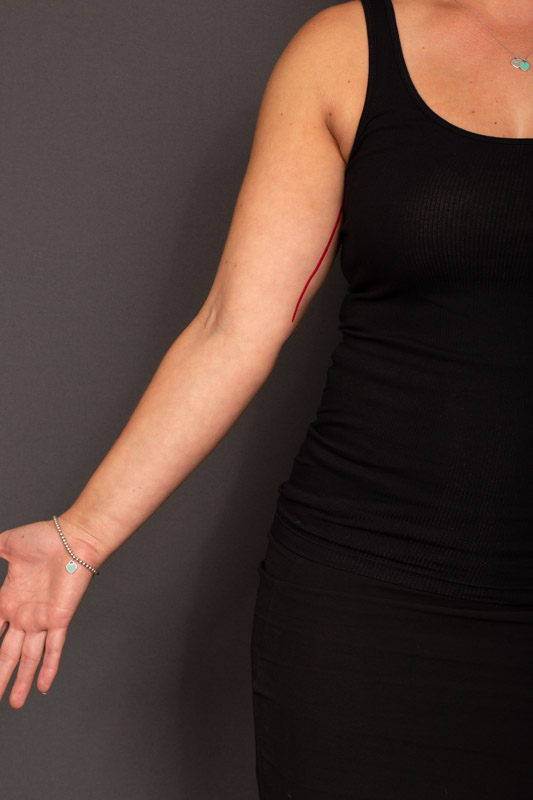
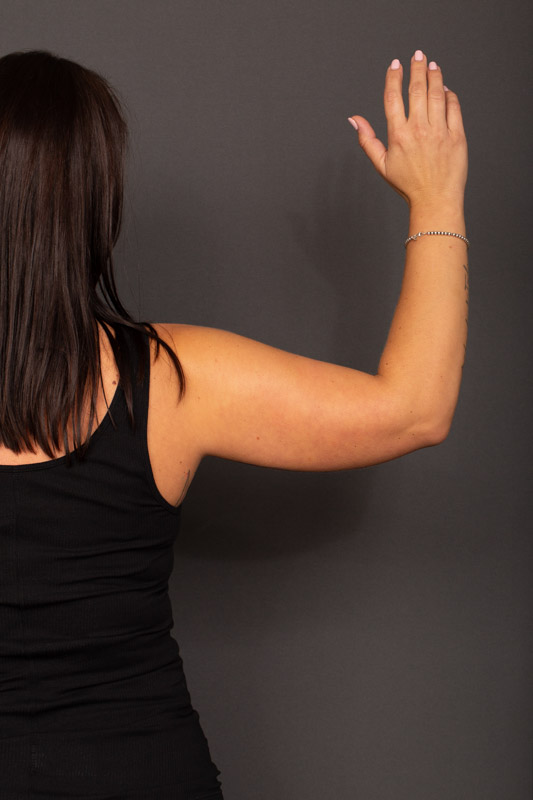
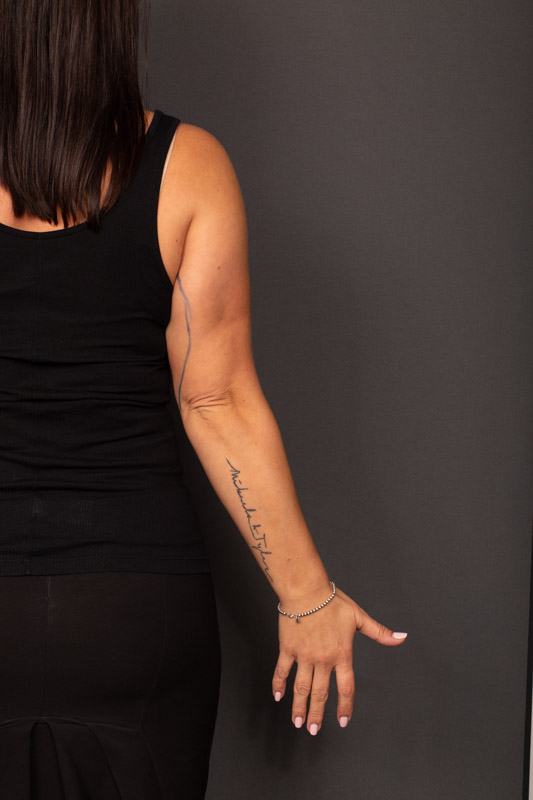
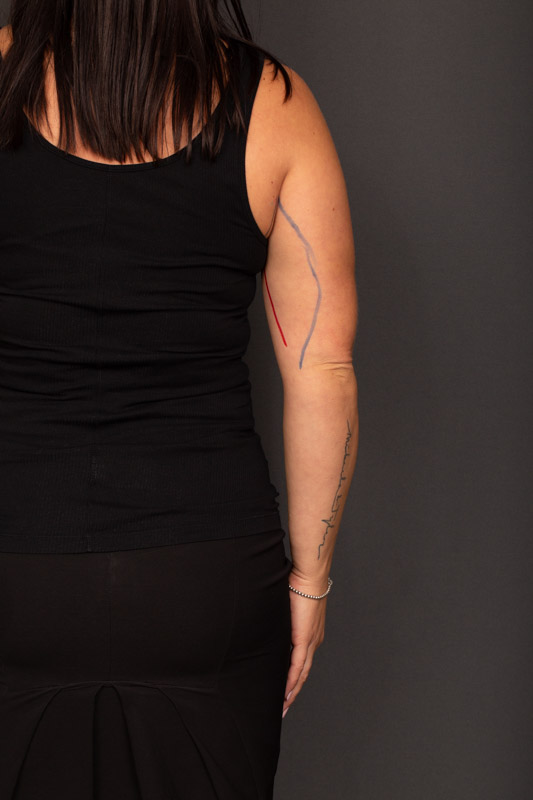
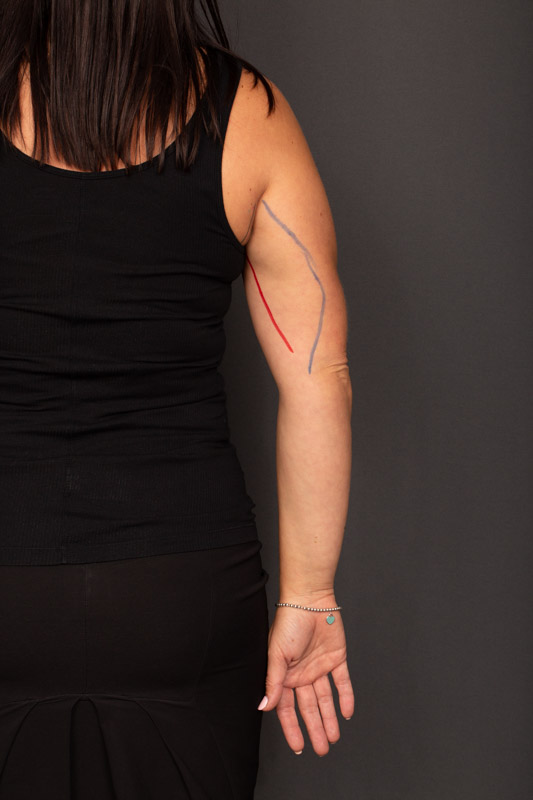
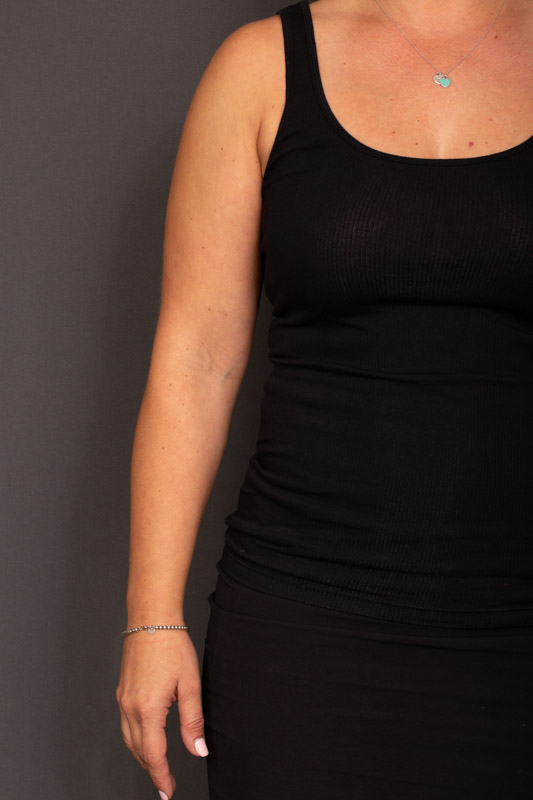
The second consideration when a surgeon chooses a scar position is the relative risk of complications. The interbrachial groove scar is closer to the regular anatomical course of the medial cutaneous nerve of the forearm, so injury to that nerve with numbness of the forearm is more likely. The interbrachial groove scar also ‘ends’ at the apex of the axilla (arm pit). This position makes it more likely to cause lymphoedema or damage to the axillary structures. This position also makes tethering of the armpit and shoulder movement restrictions more likely if the patient needs an ‘extended’ brachioplasty (where the extra skin from the chest wall is also removed).
The line of maximal hang scar is further from the sensory nerves of the forearm, and extends down the posterior axillary (armpit) fold. This position provides greater protection to the structures that pass through the arm pit, and greatly reduce the frequency of shoulder movement restrictions after brachioplasty.
The final, maybe most important, consideration is the quality of the scar. Both scar positions can result in widely varying scar qualities. Despite using a standard technique across many years, most plastic surgeons report that the brachioplasty scar is the scar with the most variable quality that they deal with.
The factor with the greatest impact on your scar quality is your genetics. For this reason, Dr Gavin Sandercoe recommends that if you are planning multiple procedures, staging your brachioplasty into the second or third operation is a good idea. That helps your surgeon predict how your scars might develop and allow them some ability to adjust plans if they need to.
Good surgical planning and execution are important in minimising your risk. Your scar needs to be closed like Goldilocks – not too tight, not too loose. A scar that is closed too loose might give you a great quality scar, but is highly unlikely to get you a firm arm. One that is too tight is likely to result in a lesser quality scar due to tension on the scar/skin as it heals.
Pressure on your surgical area (arms) will help drive out excess fluid (oedema) and allow the skin around the scar to relax and help provide the best environment for your scar to develop or mature into a soft, white scar. Dr Gavin Sandercoe recommends post-operative pressure garments for 4-6 weeks after a brachioplasty. This is the main reason that he recommends that patients consider planning their brachioplasty in winter.
Scar management is an important step in getting your best scar. Due to the unpredictable nature of brachioplasty scars, we remove our dressings and begin scar massage and silicone treatments a little earlier than we do for most body scars. Occasionally laser therapy is warranted on brachioplasty scars, and we provide this free of charge to our surgical patients.
Time is the greatest asset to all scars. Even scars that have not looked very good at the 1 year mark have often settled down and look acceptable by 3-5 years.
In 2023, the trade off for tightening your arm skin is a scar. Making you scar as good as possible will help you accept your scar as part of your journey, as there is no way to completely hide a scar on your arms.
Like with all surgical procedures, please do your homework. Make sure that your surgeon is a fully qualified Specialist Plastic Surgeon by checking their details on the AHPRA and ASPS websites.
Patient Education Library
